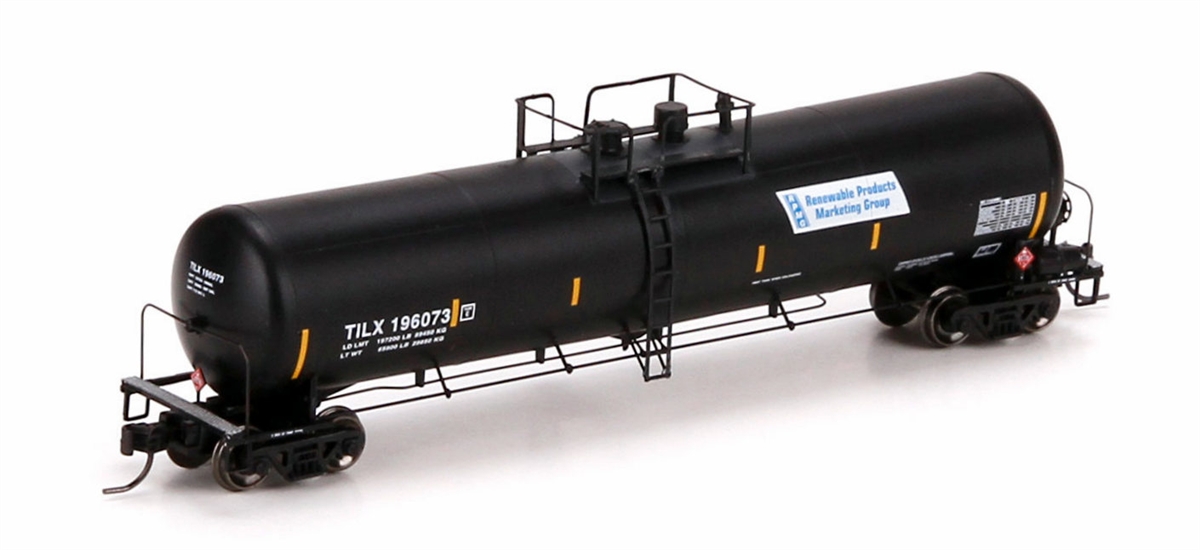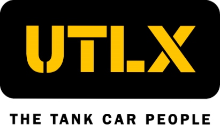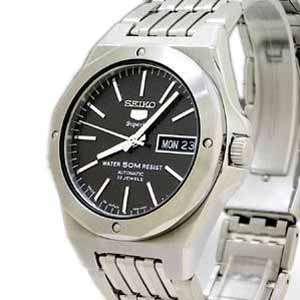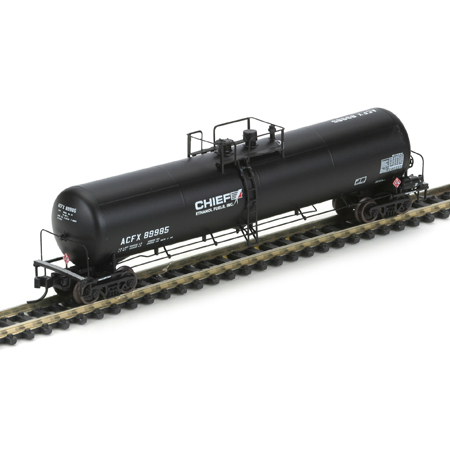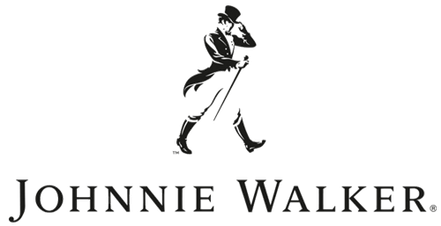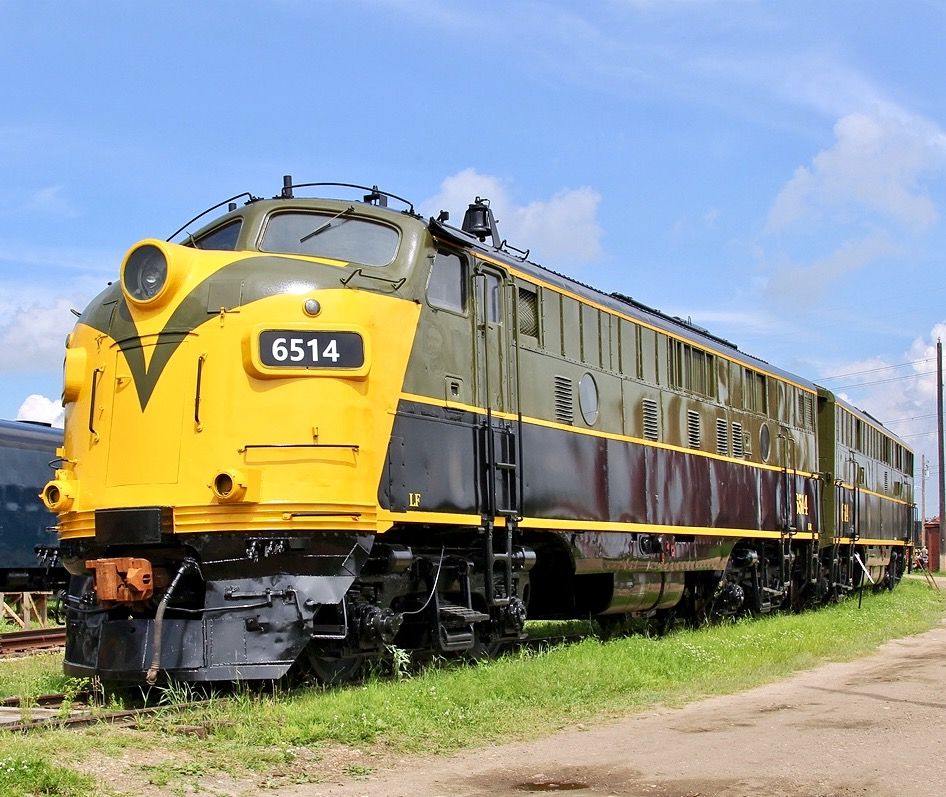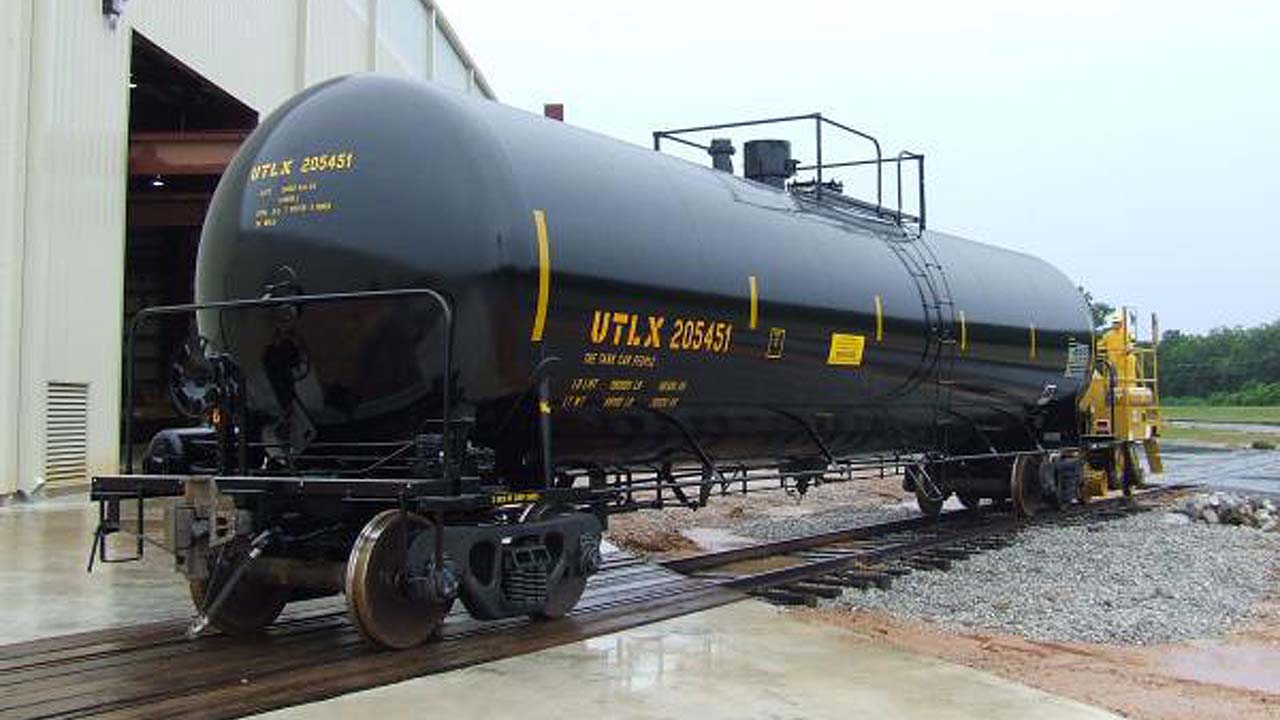Specific Item Information: N 30,000-Gallon Ethanol Tank,TILX/Renewable#196073
Model Information: This model features: Separately applied walkway platform, manway, outlet,
ladders, brake rigging detail, safety rail supports and tank saddles; Photo etched metal walkways and end platforms; Wire safety rails and end handrails; Printed placards; and 100-ton roller bearing trucks. It is recommended for use on curves with radius of 15" or more, but can be used on curves of as little as 11".
Prototype History: For years, railroads have hauled ethyl alcohol, or ethanol, as it is better known. Ethanol is mostly made from corn and is used as additive to oxygenate gasoline to reduce pollution. It has also been mixed 85 percent ethanol to 15 percent gasoline and used as an alternative to gasoline. Most of this usage was in the Midwest in states such as Illinois, Minnesota, Iowa, Kansas, Nebraska, and Indiana where there are considerable crops of corn grown. In 2004, it was mandated that ethanol be used to replace MBTE as an additive to oxygenate all gasoline used in the state of California. Since California is not a corn producing state, the ethanol has to be shipped in from states that do have large corn crops and ethanol plants.
This ethanol traffic boomed in 2004 as several million gallons of ethanol is needed each week by refineries in the Los Angeles Harbor area alone and 800 million gallons is needed in the state each year. To meet growing market demand for new tank cars, UTLX Manufacturing, Inc. is expanding production capacity with a green-field manufacturing facility at Alexandria, Louisiana. UTLX 205400 is the first car in the initial production run from the new plant. The 30,000 gallon (shell full) car is sized to stage the greatest number of cars at a producer's loading rack and still meet the 263,000-pound gross rail load limit. The car's coupled length of 59'4? and its 119 3/16? I.D. tank provide shipping efficiency within AAR Plate C clearance requirements. The Funnel-Flow design facilitates complete bottom unloading.
This ethanol traffic boomed in 2004 as several million gallons of ethanol is needed each week by refineries in the Los Angeles Harbor area alone and 800 million gallons is needed in the state each year. To meet growing market demand for new tank cars, UTLX Manufacturing, Inc. is expanding production capacity with a green-field manufacturing facility at Alexandria, Louisiana. UTLX 205400 is the first car in the initial production run from the new plant. The 30,000 gallon (shell full) car is sized to stage the greatest number of cars at a producer's loading rack and still meet the 263,000-pound gross rail load limit. The car's coupled length of 59'4? and its 119 3/16? I.D. tank provide shipping efficiency within AAR Plate C clearance requirements. The Funnel-Flow design facilitates complete bottom unloading.
Road Name History: The company, first known as Trinity Steel, was founded by C. J. Bender in Dallas in 1933. W. Ray Wallace, an engineering graduate of Louisiana Tech, worked for Dallas's Austin Bridge Company in 1944 before joining the company in 1946 as its seventeenth employee. At the time Trinity Steel manufactured butane tanks in a Dallas County mule barn. In 1958 Trinity Steel merged with Dallas Tank Company, which was also founded in 1933, and Ray Wallace became the new firm's president and first chief executive officer. At the time Trinity had revenues reaching $2.5 million and employed 200 workers. While some employees of the firm in other states eventually unionized, Texas workers never formed a union. For a time the company profited by producing larger tanks that enabled it to enter the petroleum business and do steel fabrication for refineries. In addition, to free up capital, it established an investment company to buy trucks and lease them back to the firm. Nonetheless, by 1957 Trinity faced competition and declines in the petroleum industry. Dallas Tank, Trinity Steel, and Bender-Wallace Development Company merged in 1958 to form Trinity Industries, Incorporated, and went public.
The Trinity Industries Rail Group, TrinityRail, is a leading North American provider of railcar services and products providing a single source for comprehensive rail transportation solutions. TrinityRail offers extensive manufacturing resources and a complete product line of new railcars. Included is a full menu of state-of-the-art covered hoppers, flat cars, gondolas, open hoppers, box cars, automotive equipment and tank cars. In addition, TrinityRail offers one of the fastest growing railcar lease fleets in North America and a broad portfolio of comprehensive railcar services. Our wide-ranging railcar service offerings provide our customers with enhanced transportation efficiencies and optimized fleet utilization.
From Wikipedia
The Trinity Industries Rail Group, TrinityRail, is a leading North American provider of railcar services and products providing a single source for comprehensive rail transportation solutions. TrinityRail offers extensive manufacturing resources and a complete product line of new railcars. Included is a full menu of state-of-the-art covered hoppers, flat cars, gondolas, open hoppers, box cars, automotive equipment and tank cars. In addition, TrinityRail offers one of the fastest growing railcar lease fleets in North America and a broad portfolio of comprehensive railcar services. Our wide-ranging railcar service offerings provide our customers with enhanced transportation efficiencies and optimized fleet utilization.
From Wikipedia
Brand/Importer Information: Athearn's history began in 1938, when its founder-to-be, Irvin Athearn, started an elaborate O scale layout in his mother's house. After placing an ad selling the layout, and receiving much response to it, Irv decided that selling model railroads would be a good living. He sold train products out of his mother's house through most of the 1940s. After becoming a full-time retailer in 1946, Irv opened a separate facility in Hawthorne, California in 1948, and that same year he branched into HO scale models for the first time.
Athearn acquired the Globe Models product line and improved upon it, introducing a comprehensive array of locomotive, passenger and freight car models. Improvements included all-wheel drive and electrical contact. One innovation was the "Hi-Fi" drive mechanism, employing small rubber bands to transfer motion from the motor spindle to the axles. Another was the double-ended ring magnet motor, which permitted easy connection to all-wheel-drive assemblies. Athearn was also able to incorporate flywheels into double-ended drives.
The company produced a model of the Boston & Maine P4 class Pacific steam locomotive which incorporated a cast zinc alloy base and thermoplastic resin superstructure. It had a worm drive and all power pickup was through the bipolar trucks that carried the tender. This item was discontinued after the Wilson motor was no longer available, and was not redesigned for a more technologically advanced motor.
Athearn's car fleet included shorter-than-scale interpretations of passenger cars of Southern Pacific and Atchison, Topeka & Santa Fe Railroad prototypes. The company also offered a variety of scale-length freight cars with sprung and equalized trucks. The cars could be obtained in simple kit form, or ready-to-run in windowed display boxes. The comprehensive scope of the product line contributed to the popularity of HO as a model railroad scale, due to the ready availability of items and their low cost.
Irv Athearn died in 1991. New owners took control in 1994, but continued to follow Athearn's commitment to high-quality products at reasonable prices. Athearn was bought in 2004 by Horizon Hobby. Athearn was then moved from its facility in Compton to a new facility in Carson, California. In mid-2009, all remaining US production was moved to China and warehousing moved to parent Horizon Hobby. Sales and product development was relocated to a smaller facility in Long Beach, California.
Read more on Wikipedia and Athearn website.
Athearn acquired the Globe Models product line and improved upon it, introducing a comprehensive array of locomotive, passenger and freight car models. Improvements included all-wheel drive and electrical contact. One innovation was the "Hi-Fi" drive mechanism, employing small rubber bands to transfer motion from the motor spindle to the axles. Another was the double-ended ring magnet motor, which permitted easy connection to all-wheel-drive assemblies. Athearn was also able to incorporate flywheels into double-ended drives.
The company produced a model of the Boston & Maine P4 class Pacific steam locomotive which incorporated a cast zinc alloy base and thermoplastic resin superstructure. It had a worm drive and all power pickup was through the bipolar trucks that carried the tender. This item was discontinued after the Wilson motor was no longer available, and was not redesigned for a more technologically advanced motor.
Athearn's car fleet included shorter-than-scale interpretations of passenger cars of Southern Pacific and Atchison, Topeka & Santa Fe Railroad prototypes. The company also offered a variety of scale-length freight cars with sprung and equalized trucks. The cars could be obtained in simple kit form, or ready-to-run in windowed display boxes. The comprehensive scope of the product line contributed to the popularity of HO as a model railroad scale, due to the ready availability of items and their low cost.
Irv Athearn died in 1991. New owners took control in 1994, but continued to follow Athearn's commitment to high-quality products at reasonable prices. Athearn was bought in 2004 by Horizon Hobby. Athearn was then moved from its facility in Compton to a new facility in Carson, California. In mid-2009, all remaining US production was moved to China and warehousing moved to parent Horizon Hobby. Sales and product development was relocated to a smaller facility in Long Beach, California.
Read more on Wikipedia and Athearn website.
Item created by: George on 2016-09-14 12:17:03. Last edited by gdm on 2018-02-15 20:25:12
If you see errors or missing data in this entry, please feel free to log in and edit it. Anyone with a Gmail account can log in instantly.
If you see errors or missing data in this entry, please feel free to log in and edit it. Anyone with a Gmail account can log in instantly.


